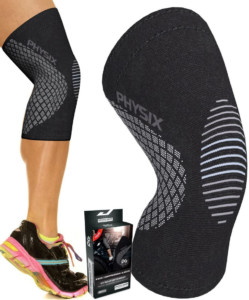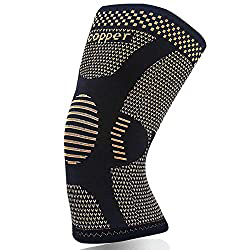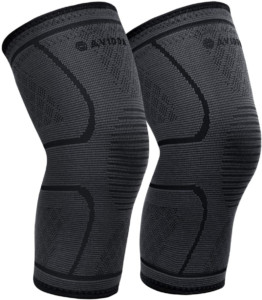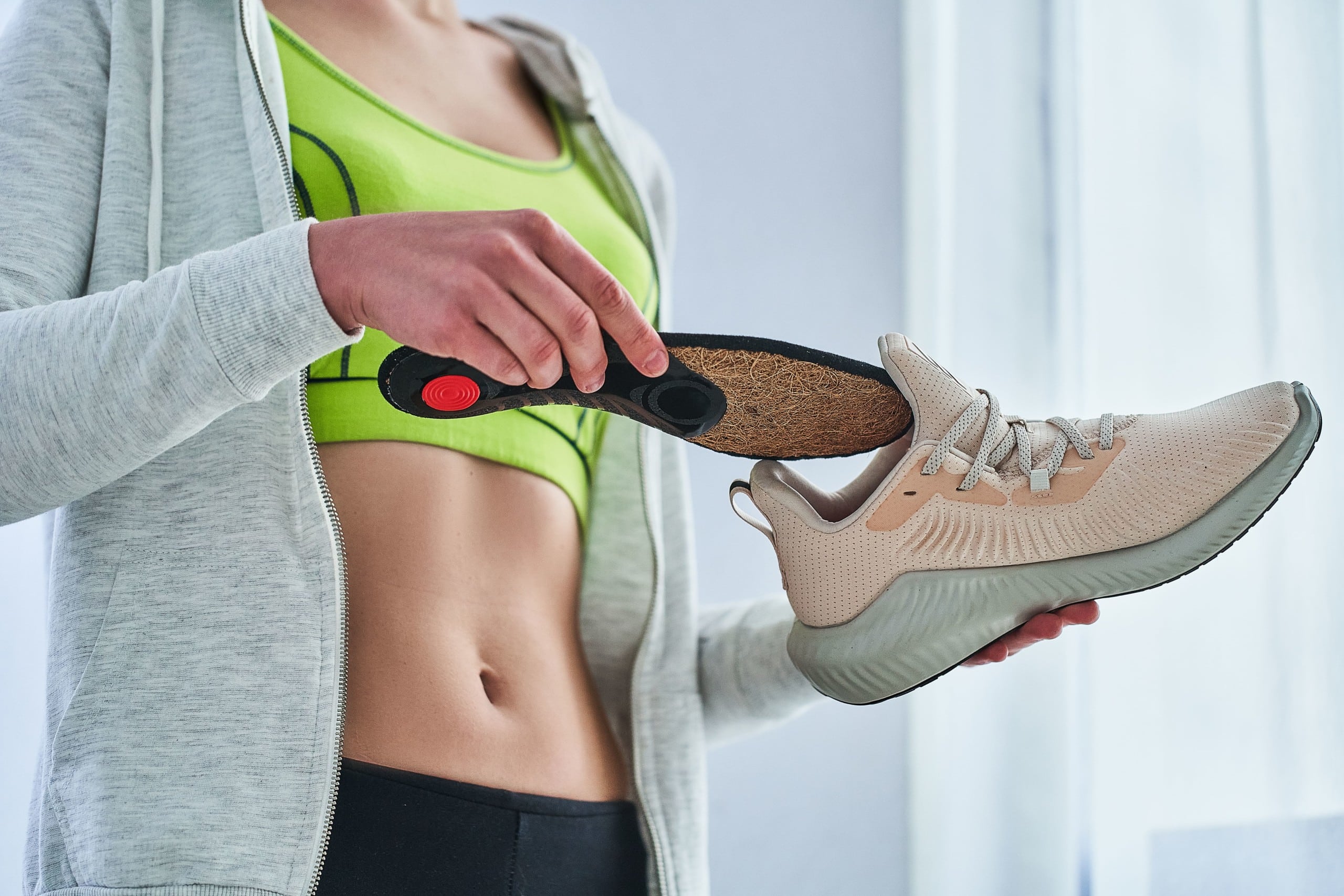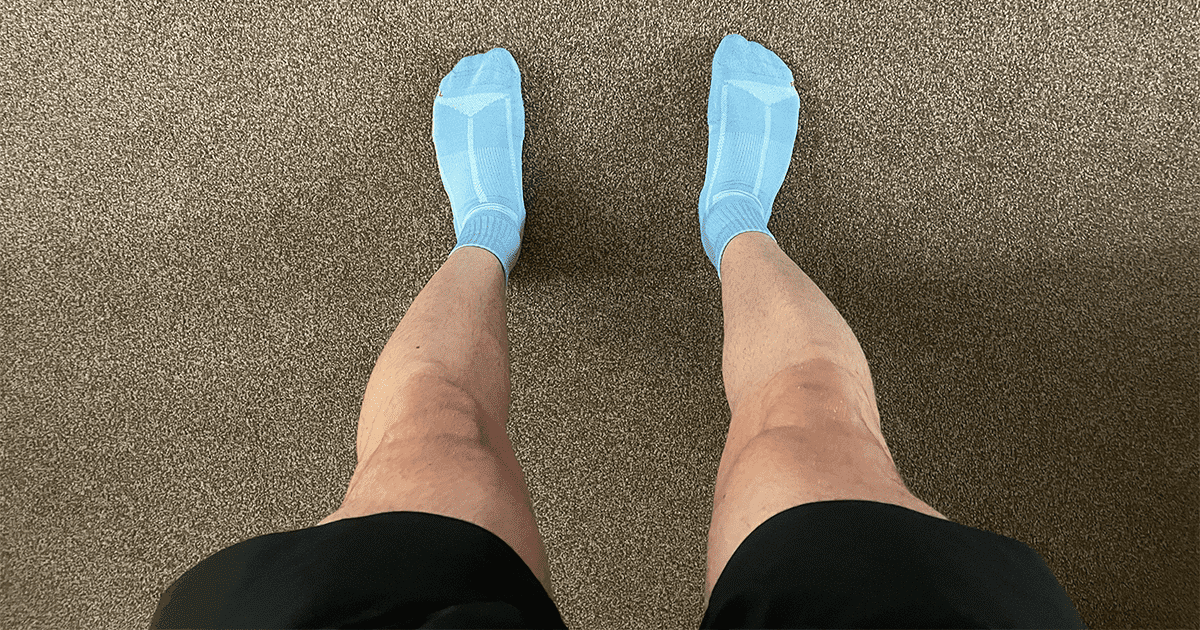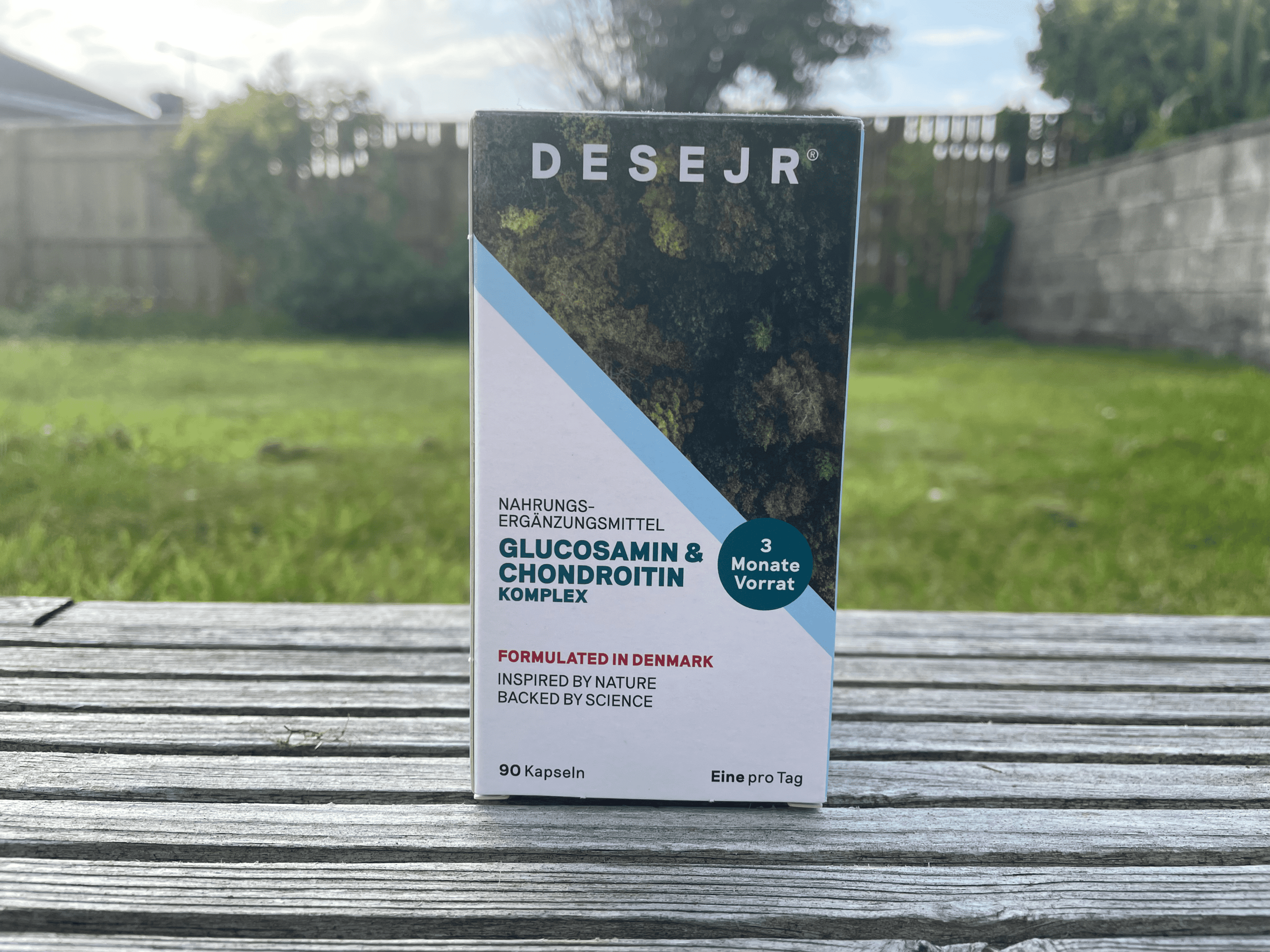How to find the best knee support for running
Why wear a knee support for running, who shouldn’t wear one, and the top three to choose from.
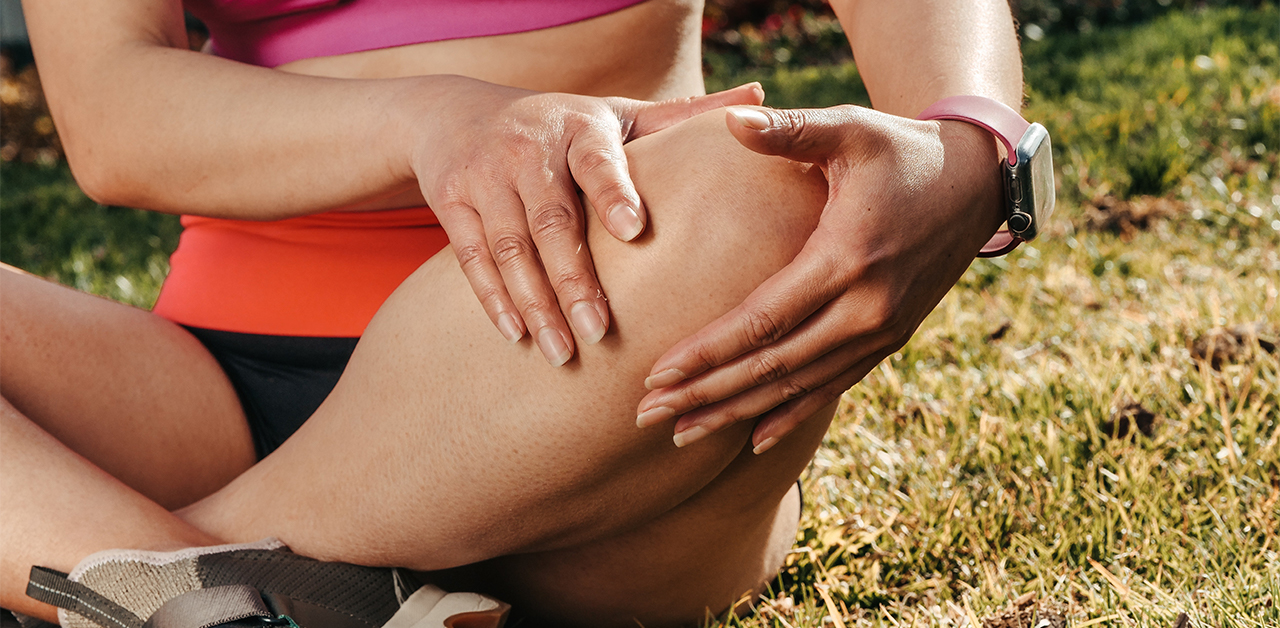
If you’ve recently been experiencing pain in the knee or the knee area, whether a result of running, walking, or maybe an injury, then you might be considering a knee brace or alternate form of support.
Many runners and other athletes opt to wear a knee support for running to help alleviate pain. Often, however, knee braces and other forms of support are not a permanent solution to eliminate knee pain – instead, they are used to reduce pain until you can source and eliminate the underlying problem.
For example, knee pain in runners could be a result of general overtraining, weaknesses in the hips and glutes, or other muscular imbalances. While a knee brace will not fix these imbalances, allowing you to return to running pain-free, a brace will help alleviate pain in the meantime, enabling you to somewhat keep up with your training.
This article will discuss who should and shouldn’t wear a knee support for running (including the benefits); we will highlight three of the top compression knee braces and will provide further advice regarding knee pain.
Please note: this post contains links to Amazon. As an amazon associate, we will earn a small percentage on qualifying purchases. Find out more here.
Who should wear a knee brace when running?
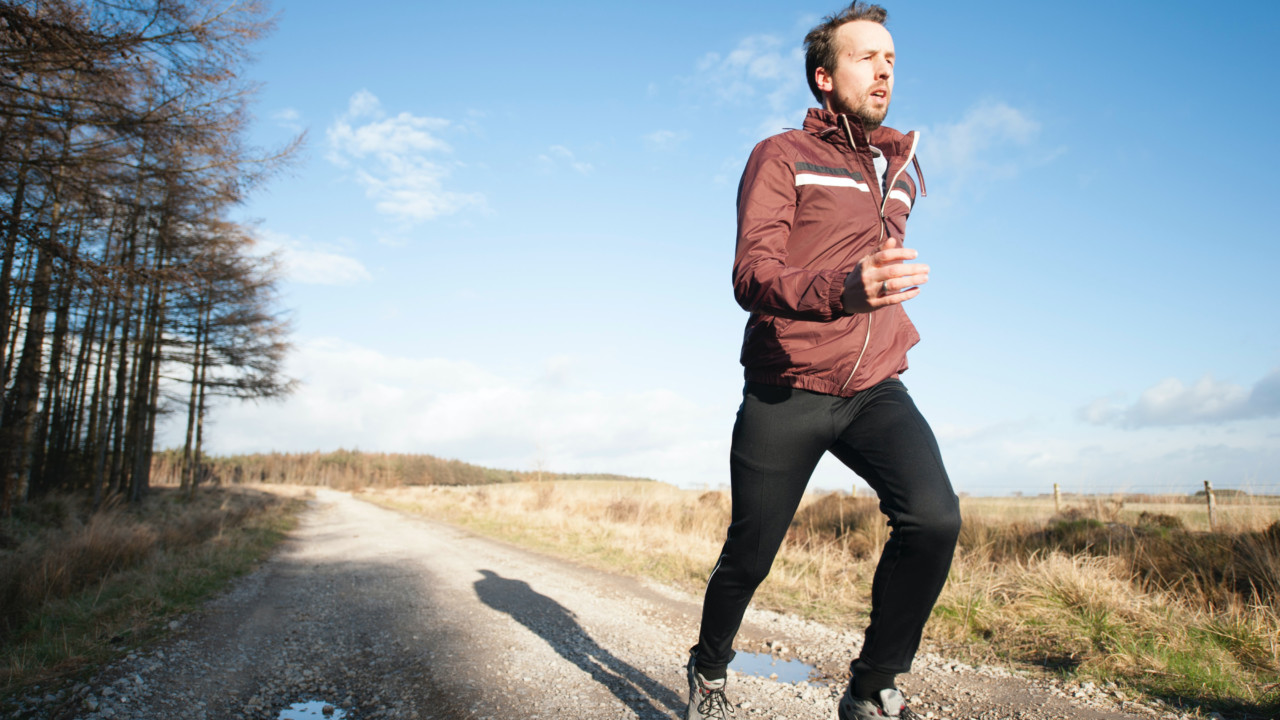
As runners, the majority of us are terrible at acknowledging pain and what could be a potential injury. Instead, we tell ourselves stories: “that pain has already been there,” or “I’ve experienced worse, it’ll be fine.” Maybe we do this out of fear that we won’t be able to run, that reality will kick in and that we’ll be side-lined and unable to stomp the pavement. However, as much as we hate to admit it, dealing with pain and warning signs of injury head-on is, well, the best way to prevent injury… as simple as it may sound.
So, who should wear a knee brace or other form of knee support for running? Generally, if your knee pain is gradual and not a sudden and sharp pain, then you may benefit from a knee brace. Wearing a knee support will provide you with additional compression and pain relief, allowing you to resume training somewhat until you pinpoint the source of the pain.
Often, high-level athletes wear knee braces and other forms of support to protect against injury, mainly if they experience gradual pain. Wearing a brace can make all the difference, especially if you also attend a physio or doctor to determine the source of the pain and a plan to eliminate this entirely (e.g. working on muscular imbalances, a stretching routine, etc.).
Who shouldn’t wear a knee support for running?
While most runners will likely benefit from a knee brace for running with general pain and discomfort, there are some instances when you should sit it out and instead seek medical support.
For example, if your knee pain is acute and not gradual, i.e. if the pain is a result of a fall, sprain, or another injury, then instead of going straight for a brace, you should receive a professional medical opinion first and foremost. This is required to ensure there is no serious damage to your knee (or other ligaments), and to determine whether or not there is a proper injury, and the ideal path to recovery.
What are the different types of knee support available?
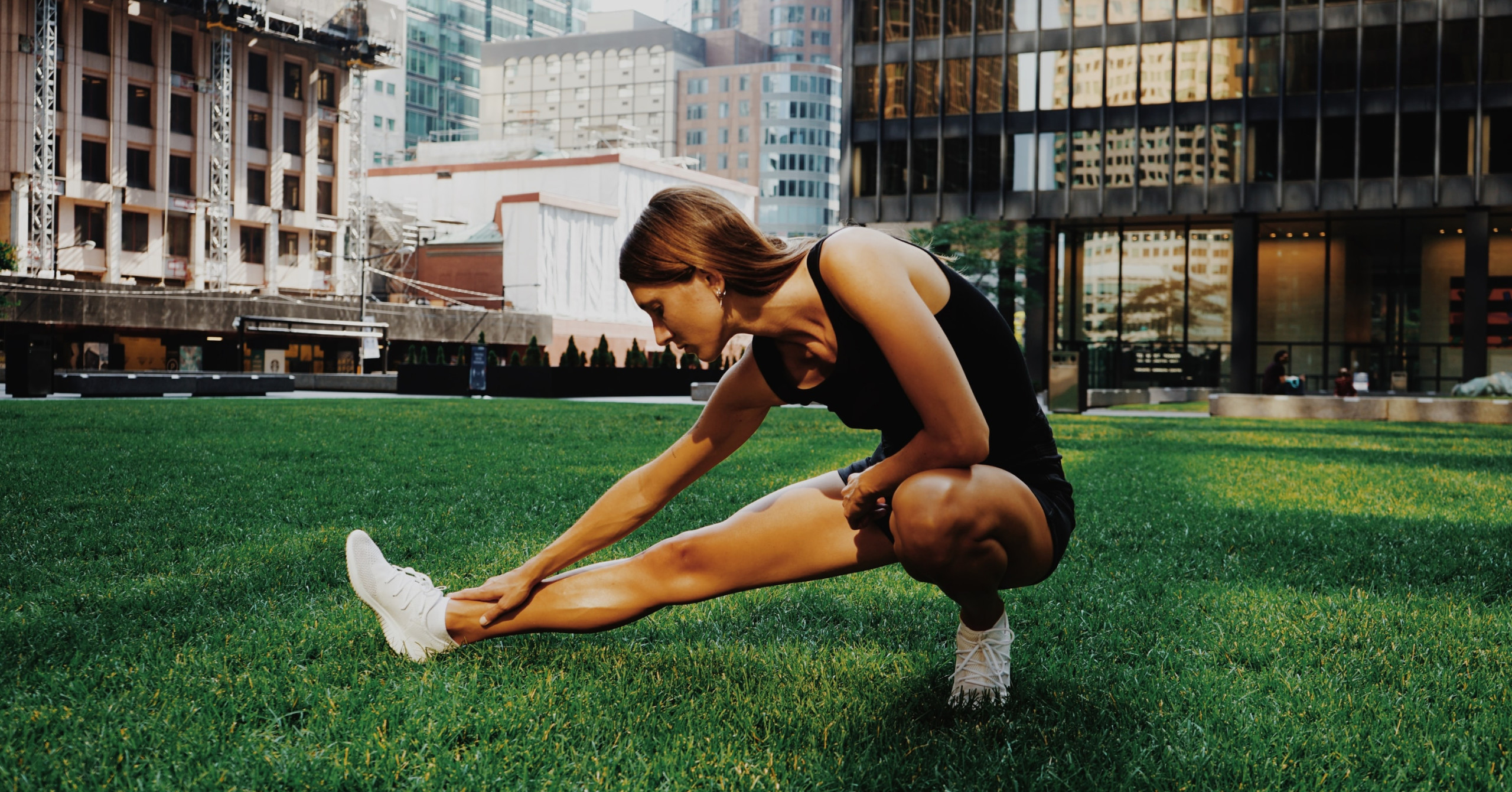
Choosing a knee support is not as straightforward as you may think. This is because there are three different types of brace available, each doing a slightly different job, used for more severe or discreet-related knee pain or injuries.
For the very best results (and to protect against injury and further pain), we recommend visiting a doctor before purchasing knee support. Nonetheless, the three main types of knee braces available are as follows:
Compression knee support for running
Firstly, we have the compression knee support for running. Out of the three options available, this brace offers the least support, but is also the most accessible, least invasive, and safest option for runners experiencing gradual knee pain.
Much like other compression running gear, a compression designed knee support fits tightly around the knee joint, providing increased blood flow, improved movement, and support to protect your knee.
As previously mentioned, this is the safest knee support option for runners – there are very few, if any, downsides of wearing one.
Patellar knee brace
Second, we have the patellar knee brace. This type of brace is used to help straighten the knee when running and walking, reducing the tension on the knee joint and the tendon. Often, a patellar knee brace is prescribed or suggested to runners with patellar tendon issues or injuries.
Unlike the more popular compression knee brace option, the patellar knee brace is less accessible and not recommended for those experiencing gradual or mild knee pain (unless you receive diagnosis or advice suggesting you to do so).
Medial and lateral knee support
Finally, we have the medial and lateral knee support brace, offering the most support, but also the most invasive. Once again, this is not a brace you willingly use to reduce your pain – it’s one that a doctor recommends, usually in response to ACL-related injuries, severe arthritis, and other running-related injuries where the knee is prone to caving in or out.
What is the best knee support for running?
As discussed above, we do not recommend purchasing a patellar knee brace of medial and lateral type of knee support before consulting a doctor or physical therapist. Alternatively, compression knee support is recommended if you are experiencing gradual knee pain – this is the least invasive and may offer the appropriate level of support without increasing your risk of injury.
So, with this in mind, we’ve gathered together the three best compression knee support options for runners below:
1. Physix gear knee support for runners
Features:
- Four-way stretch design to provide ultimate support
- Breathable and non-restrictive fabric
- Graduated compression for pain relief and injury prevention
Pros:
- Gel design prevents the knee support from slipping during exercise
- Non-bulky design makes this ideal for wearing under jeans or other clothes
Cons:
- Sizing may be a little complicated
The Physix gear knee support for runners is our number one choice for numerous reasons. For example, the signature four-way stretch design provides ultimate support for those suffering from knee pain or more serious knee-related injuries.
Also, in particular, the gel design prevents the brace from slipping during exercise. Furthermore, the design is non-bulky, making it just as good for everyday use as it is for running and other exercises.
It is worth noting that some runners had issues choosing the right size. Therefore, we recommend looking at the size guide before ordering to avoid disappointment.
2. Copper compression knee support for running
Features:
- Three dimensional knitted fabric provides enhanced ventilation
- Ergonomically designed for running (and other sports)
- Provides constant pressure to the knee joint for enhanced support while running
Pros:
- Copper fabric provides superior pain relief compared to nylon and other fabrics
- Silicone gel strips hold the brace in place to prevent slipping
Cons:
- Fabric may appear a little rough & abrasive
- Better options available for all-day wear
Next up, we have the Copper compression knee support for running. Similar to the Physix gear one above, the Copper design uses three dimensional knitted fabric for equally as impressive ventilation and breathability.
Unlike other fabrics, including nylon, copper provides superior pain relief, allowing you to focus on your run, cycle (or other forms of exercise) with no worries. This running brace also contains silicone gel strips (as does the third option on our list) to prevent the brace from slipping while running. In particular, the copper design applies constant pressure on the knee joint to increase blood flow and promotes proper support to reduce your risk of injury and pain.
Some users, however, reported the fabric to appear a little rough and abrasive when wearing for long periods of time. Therefore, there are perhaps better options available for all-day wear, and instead, the copper compression knee support should primarily be worn for running (and exercise).
3. Avidda compression knee brace for running
Features:
- Silicone gel strips prevent the knee support from slipping while wearing
- Comfortable design ideal for all-day use
- Breathable and sweat-absorbing material makes this brace ideal for running and other activities
Pros:
- Two knee supports per pack (unlike other products)
- Can be worn all day and for various activities
- Provide constant support to the knee joint
Cons:
- Many runners had trouble finding the right size
Third and final, we have the Avidda compression knee brace for running, once again utilising these silicone gel strips to prevent slipping while wearing. Unlike the copper brace above, the comfortable and sweat-absorbing material makes this support ideal for all-day use (and other activities).
Unlike most other knee supports available, this one comes as a pair (one for each leg). This is great value if you were originally going to buy two, or if you want an extra one so that you always have one clean and ready to go.
Despite this, similarly to the Physix gear sleeve, some runners did also have trouble finding the right size. In particular, you may wish to consider ordering a size up compared to usual.
Knee braces are not a permanent solution most runners
We have already touched upon this point. However, it’s important to mention that knee braces are not a permanent solution for most runners. Instead, they are a temporary aid used to help you keep training and reduce pain while figuring out what is causing the pain and how to fix it. They can also be beneficial in protecting against injury, as we see many elite athletes using them for this exact reason.
For the very best results and to protect yourself against injury, it’s best to seek the advice of a physical therapist or doctor if you are experiencing any kind of knee pain when running or walking.
There are little to no downsides of wearing a regular compression knee brace, so consider wearing one in the meantime to help reduce pain and allow you to go about your day and regular training somewhat pain-free.
Frequently asked questions
To finish, we’ve gathered together various frequently asked questions concerning knee pain and support options available:
How to find the best knee support for you?
To find the best knee brace or support options available, we recommend visiting a physical therapist or doctor. Not only may you be advised a specific brace, but this should help determine the source of the pain for increased running longevity, reduced pain, and a quicker return to the sport you love.
Is it okay to run with a knee support?
Running with a knee support can be helpful, reducing pain and reducing your risk of injury. However, avoid patellar knee braces and medial and lateral support options unless recommended by a doctor or physical therapist. Instead, stick with regular compression braces.
How do you stop knee pain when running?
Knee pain when running can be the result of many different things, e.g. muscular imbalances in the hips, a direct injury, general overuse, or many, many other reasons. To stop pain, you should rest and ice the knee, visit a physical therapist or doctor for further support, and consider wearing a knee brace to prevent pain when running.
Is knee pain common in beginner runners?
Knee pain is one of the most commonly reported concerns of new runners. Usually, this pain is a result of inexperience and a lack of conditioning. We recommend taking it easy, wearing the correct footwear, and listening to your body for the best results.

Matthew is a lifelong runner, chief tester of all products, the founder of Running101, and freelance content writer for active brands. When he’s not writing, he enjoys lifting weights, cycling in the Lake District, and watching fast cars drive in circles on a Sunday. He also has a BA in sport, exercise and physical activity from the University of Durham.

